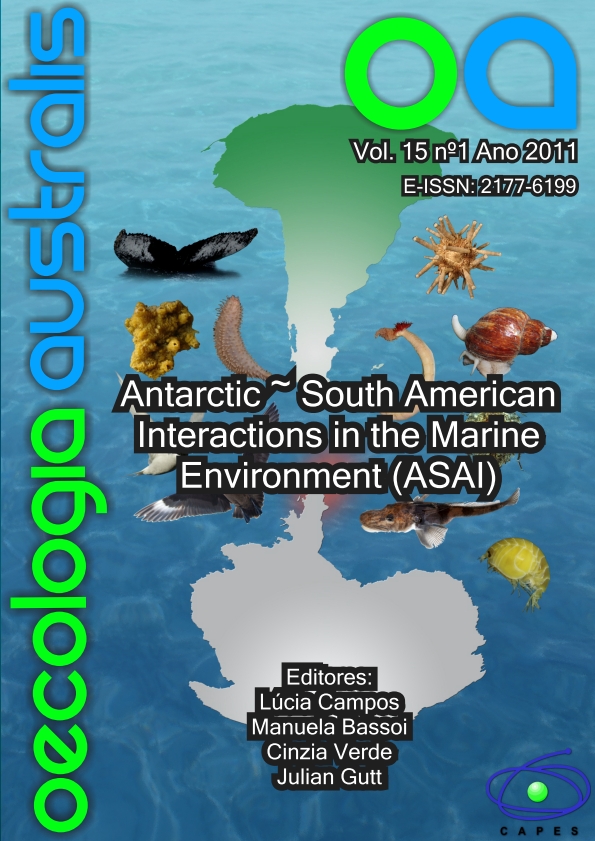ANTARCTIC FISH METABOLIC RESPONSES AS POTENTIAL BIOMARKERS OF ENVIRONMENTAL IMPACT
Palavras-chave:
Antarctic, Fish, Biomarkers, Metabolism, EnvironmentResumo
RESPOSTAS METABÓLICAS DE PEIXES ANTÁRTICOS COMO MARCADORES DE IMPACTO AMBIENTAL. Boa parte dos estudos bioquímicos e fisiológicos com peixes Antárticos foram conduzidos objetivando entender a adaptação molecular desses organismos ectotérmicos às baixas temperaturas, bem como os limites da sua plasticidade metabólica associada com o estresse termal. O principal objetivo desta revisão é discutir os metabolismos energético, da L-arginina, de xenobióticos e da defesa antioxidante dos peixes antárticos. Com o estabelecimento da Corrente Circumpolar Antártica e o isolamento geográfico da região, os peixes antárticos evoluíram sob temperaturas baixas e estáveis. O número elevado de espécies endêmicas, a baixa diversidade e a provável estenotermia motivaram diversos estudos com peixes antárticos. A presença de enzimas com propriedades fisico-químicas adaptadas a baixa temperatura ficou evidente em vários estudos e reforçou o conceito de adaptação ao frio. Ao ratificar o Protocolo de Proteção Ambiental para o Tratado da Antártica (protocolo de Madri), os países membros se comprometeram com o monitoramento ambiental da região. Embora seja considerada a região mais preservada do planeta, a presença humana crescente na Antártica tem motivado preocupações em relação à poluição por óleo combustível, metais pesados e esgoto. A sustentabilidade energética dos tecidos requer que a velocidade de síntese de ATP pelos seus sistemas geradores esteja em consonância com a demanda energética. Mudanças ambientais podem elevar a demanda energética dos organismos e, por sua vez, demandar ajustes na velocidade de síntese de ATP. Nesse caso, os aumentos ou reduções dos níveis enzimáticos tem sido utilizados como biomarcadores do metabolismo energético. Tradicionalmente, enzimas da defesa antioxidante e do metabolismo de xenobióticos de peixes tem sido utilizadas como biomarcadoras para indicar alterações ambientais naturais ou antrópicas. Estes estudos devem correlacionar os níveis de atividade enzimática com a presença do principal fator de risco da poluição ambiental. As enzimas do metabolismo da L-arginina tem sido utilizadas como biomarcadoras de respostas fisiológicas em mamíferos, mas há poucos estudos sobre peixes antárticos. A função do aminoácido L-arginina na síntese de óxido nítrico, poliaminas e como sinalizador em vários processos fisiológicos tem chamado a atenção de pesquisadores. A distribuição tecidual e a distribuição de isoformas, bem como o controle via upregulation e downregulation das enzimas arginase, óxido nítrico sintase e ornitina descarboxilase de peixes antárticos representam potenciais biomarcadores de alterações ambientais.
palavras-chave: Antártica; peixe; biomarcador; metabolismo; ambiente.


